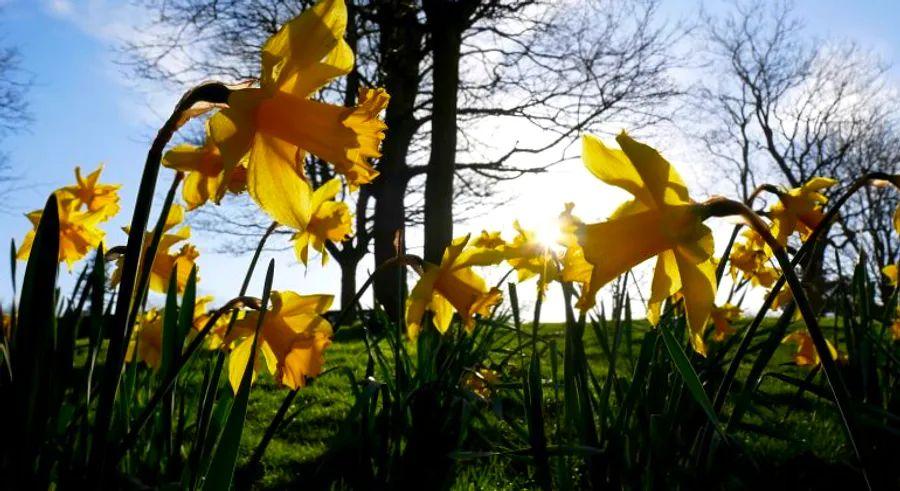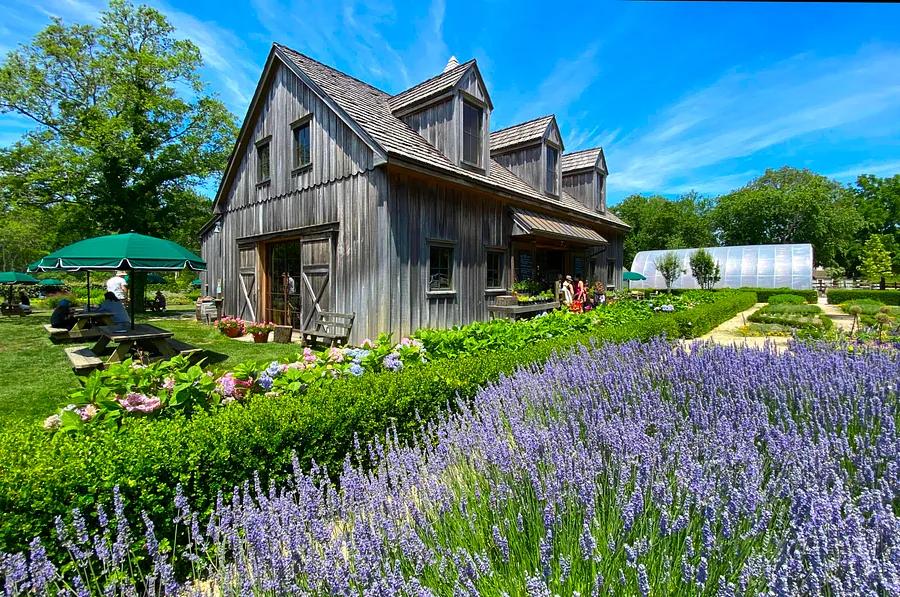Spring Equinox 2021: A Glimmer of Hope on the Horizon

For those in the Northern Hemisphere who endured a harsh winter, hope is now on the horizon. The Spring Equinox of 2021 will occur on Saturday, March 20, bringing a nearly perfect balance of day and night across the globe.
In 2020, the equinox arrived earlier than expected, marking the earliest occurrence in 124 years. That unusual timing was overshadowed by the pandemic, as the world began to enter lockdowns and social distancing measures due to COVID-19.
The year 2020 felt unsettling, as the call of the Spring Equinox, a symbol of ancient renewal, had to be met with an unprecedented isolation. For centuries, humans have celebrated the promise of new beginnings by gathering outdoors. Yet, in the face of the pandemic, we were forced to retreat indoors to help curb the virus’s spread.
But 2021 brings a ray of optimism. The Spring Equinox is returning to its familiar March 20 date, and with the rapid distribution of COVID-19 vaccines, the traditional hopes of renewal and rebirth are finally within reach.
Here are some interesting scientific and cultural facts about the spring equinox. Plus, we'll have an exciting asteroid passing by the Earth the following day that you won’t want to miss.
The spring equinox is also known by another name
If you hear the term 'vernal equinox,' don't worry—it's simply another name for the same event.
The word 'equinox' is derived from the Latin 'equinoxium,' meaning 'equality of night and day,' while 'vernal' comes from Latin and means 'spring.'
When exactly does the spring equinox occur?

The spring equinox will occur at 9:37 UTC (Coordinated Universal Time) on March 20. For cities like Montreal and Miami, this means it will be 5:37 a.m. local time. In San Diego and Vancouver, it happens at 2:37 a.m.
For those in Lisbon and London, the equinox will take place at 9:37 a.m. Heading eastward, Istanbul will experience it at 12:37 p.m., and Mumbai will see it at 3:07 p.m. In Tokyo, the equinox will occur in the late afternoon at 6:37 p.m. You can click here for a full list of major cities on timeanddate.com, or click here to find out the time for your location.
For those in the Southern Hemisphere, fall will be in the air as the equinox marks the beginning of autumn.

While people in the Northern Hemisphere anticipate longer days, warmer temperatures, blooming flowers, and a burst of greenery, those living south of the equator are heading into fall.
For people in Argentina, South Africa, Australia, and other Southern Hemisphere countries, this equinox brings the promise of cooler weather and the joys of autumn.
For those living near the equator, such as in Quito, Ecuador, or Singapore, the equinox isn’t a big event. They experience roughly equal daylight and nighttime hours throughout the year.
What causes the spring equinox to occur?

The Earth rotates around an imaginary line known as the axis, which stretches from the North Pole to the South Pole. This rotation is what creates the cycle of day and night.
The Earth’s axis is tilted at a 2-degree angle, as explained by NASA. This tilt causes one hemisphere to receive more sunlight than the other during half of the Earth’s orbit, and this uneven distribution of sunlight is what drives the changing seasons.
The effects of the Earth's tilt are most extreme during the solstices in late June and late December. These moments bring the greatest differences between day and night, particularly near the poles. (This is why places like Scandinavia and Alaska experience such long nights during winter.)
Since the winter solstice three months ago in December, the Northern Hemisphere has been gradually experiencing longer days and shorter nights. And now, at the spring equinox, the Northern Hemisphere will begin to see more sun exposure than the Southern Hemisphere. This shift is what leads to the increasing warmth as we approach the summer solstice in June.
Fun fact: The equinoxes aren’t truly ‘equal’ after all.

Interestingly, you actually experience slightly more daylight than darkness on the equinox – and the exact difference depends on where you are on Earth.
So how can that be if we’re supposed to have 12 hours of daylight and 12 hours of night? As the US National Weather Service explains, the discrepancy occurs because of how sunrise is measured and the way sunlight bends (refraction) in Earth’s atmosphere.
This bending of light causes the sun to appear above the horizon even when its true position is still below it. Additionally, the day lasts longer at higher latitudes than near the equator, because the sun takes more time to rise and set as you get closer to the poles.
The perfectly equal day/night split actually occurs a few days before the official spring equinox, in an event known as the equilux.
Get your bearings

For skywatchers, the EarthSky website highlights that the equinoxes – whether spring or autumn – are the perfect time to orient yourself. These are the only two days each year when the sun rises directly in the east and sets directly in the west for everyone across the globe.
According to EarthSky, the equinox offers a great opportunity to identify east and west from your yard or a favorite stargazing spot. Simply step outside during sunrise or sunset and observe where the sun sits on the horizon in relation to familiar landmarks.
Festivals and customs

Due to the ongoing pandemic, many celebrations will either be canceled or modified to meet safety protocols.
In England, Stonehenge, the ancient stone monument, is a popular gathering spot for crowds during the equinoxes and solstices. However, due to the winter surge in Covid-19 cases, the UK went into another lockdown.
According to the English Heritage website, Stonehenge is scheduled to reopen to the public on April 12, which will be after this year’s vernal equinox.
Chichén Itzá in Mexico, a popular Mayan site that typically attracts large crowds during the solstices and equinoxes, will be closed from March 20 to March 22 (Saturday to Monday), according to the Yucatan Times. It also closed during the 2020 spring equinox. This year, it will reopen on Tuesday, March 23.

While some of the major attractions remain closed, local communities are finding safe ways to celebrate the arrival of spring.
For instance, Pike Place Market in Seattle will host its 24th annual Daffodil Day, where visitors will receive a free bunch of daffodils during their visit to the market.
Around the world, various cultures observe this special event.
Nowruz, the Persian New Year, also known as Nauryz, Navruz, or Nowrouz, translates to “new day.” The celebration will begin on Saturday, March 20.
It’s no coincidence that Nowruz coincides with the first day of spring. The Iranian calendar is a solar-based system, meaning it’s determined by the Earth’s orbit around the sun, with the new year beginning exactly at the vernal equinox.
Nowruz marks a time of renewal: a moment to embrace prosperity, look forward to the future, and let go of the past. As part of the tradition, families typically clean their homes, tidy their closets, and purchase new clothes.
In China, a popular tradition during the spring equinox is to attempt to balance an egg upright, a practice believed to date back thousands of years, according to VisitBeijing.com. Success in balancing the egg is thought to bring good fortune. Additionally, people across China enjoy eating seasonal spring vegetables.
A special guest will be passing by on Sunday.
For science and space enthusiasts, there’s a post-equinox surprise to look forward to.
The largest asteroid expected to make a close pass by Earth in 2021 will do so on Sunday, though rest assured it will be at a safe distance, according to NASA. The asteroid is estimated to be between 1,300 and 2,230 feet wide.
Named 2001 FO32, this near-Earth asteroid will approach from a distance of 1.25 million miles, more than five times farther than the Earth-Moon distance.
This asteroid will be traveling at an impressive speed of 77,000 miles per hour—much faster than most that come near our planet. Its closest pass will occur at 12:03 p.m. ET on Sunday.

1

2

3

4

5
Evaluation :
5/5